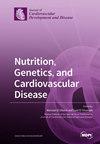血流分流支架治疗复杂内脏和肾动脉瘤的系统综述。
IF 2.3
4区 医学
Q2 CARDIAC & CARDIOVASCULAR SYSTEMS
引用次数: 0
摘要
血流分流支架(FDS)是一种复杂的血管内装置,旨在调节血流和促进动脉瘤血栓形成,同时保持分支血管通畅。这些装置最初是为治疗颅内动脉瘤而设计和开发的,后来被应用于外周循环。然而,它们仍然被零星地使用,主要是因为缺乏科学证据支持其在内脏动脉瘤中的应用。这篇综述文章旨在概述FDS在治疗复杂内脏和肾脏动脉瘤或假性动脉瘤中的临床结果,并评估这些装置的附加价值。本文章由计算机程序翻译,如有差异,请以英文原文为准。
Flow Diverting Stents for the Treatment of Complex Visceral and Renal Aneurysms-A Systematic Review.
Flow-diverting stents (FDS) are sophisticated endovascular devices that aim to modulate blood flow and promote aneurysm thrombosis while maintaining branch vessel patency. Initially designed and developed for the treatment of intracranial aneurysms, these devices have since been applied to the peripheral circulation. However, they are still used sporadically, largely due to a lack of the scientific evidence supporting its use in visceral aneurysms. This review article aims to provide an overview of the current data on the clinical outcomes from the use of FDS in the treatment of complex visceral and renal aneurysms or pseudoaneurysms and to assess the added value of these devices.
求助全文
通过发布文献求助,成功后即可免费获取论文全文。
去求助
来源期刊

Journal of Cardiovascular Development and Disease
CARDIAC & CARDIOVASCULAR SYSTEMS-
CiteScore
2.60
自引率
12.50%
发文量
381
 求助内容:
求助内容: 应助结果提醒方式:
应助结果提醒方式:


